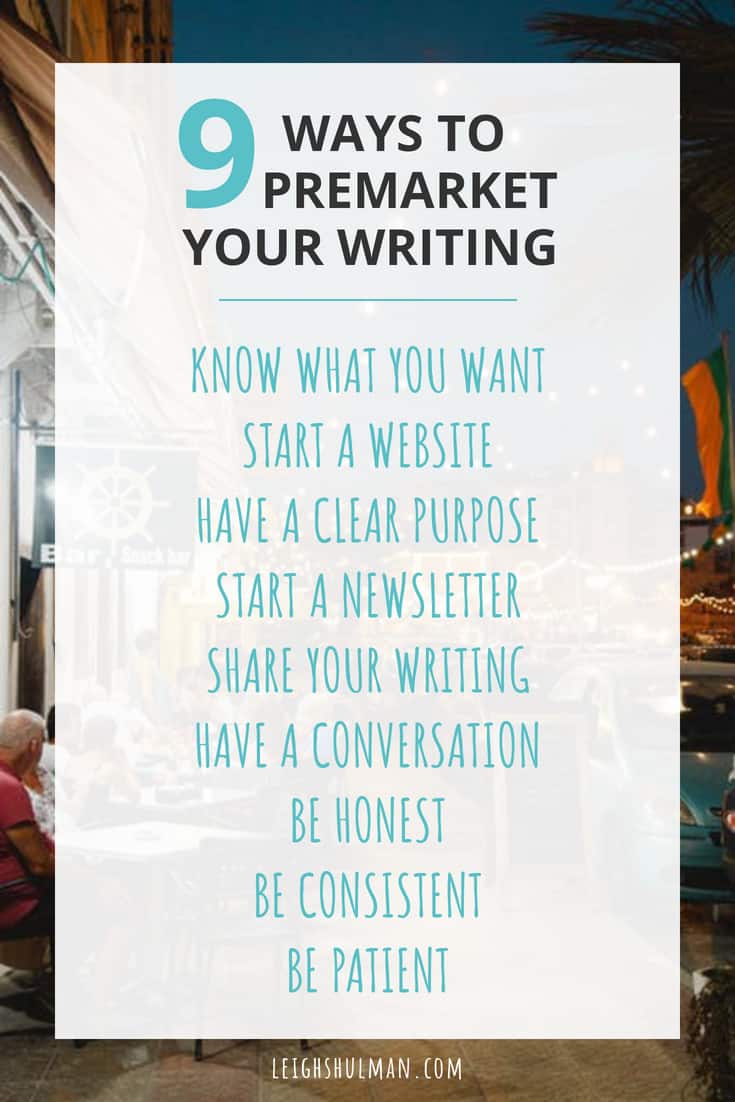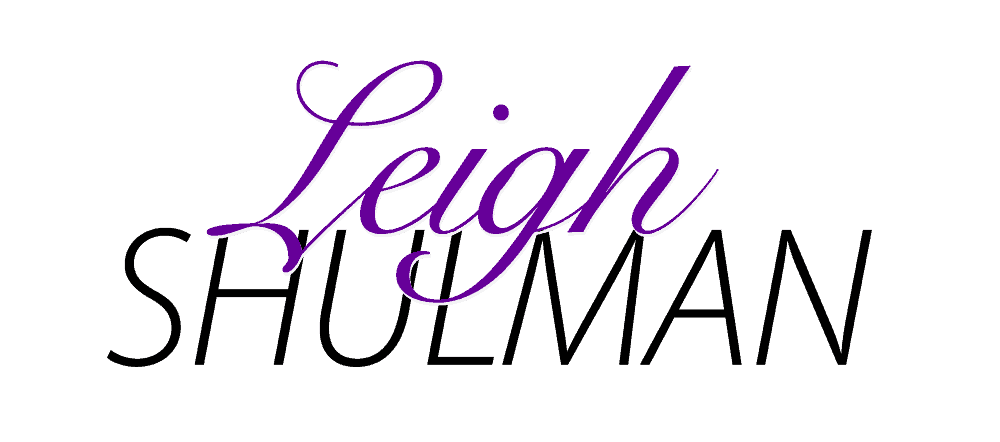“What the hell is pre-marketing?” you may be asking right now. And why do I need to do it?

I get it. But here’s the truth. If you want people to read your writing, you have to let them know it exists. This is marketing.
Many people think they can just write, send things out to publish and hope for the best. This is unfortunately not the case. You will always be your own best advocate for your work.
Thankfully, there are painless ways you can put your writing into the world and create a pre-marketing plan for your writing and books even before you have anything to sell. Marketing and pre-marketing can be painless if you allow your actions and words to grow naturally from who you are and what you want.
What is pre-marketing?
Pre-marketing creates an awareness that you exist. It’s building an audience of readers and like-minded thinkers before you have something to sell or a finished book. You don’t need a specific sell during pre-marketing, because your goal is to find people who connect with you and your message.
You do this to create a community and engender trust between you and your audience, so when you do have something to sell, they already know you and are thrilled to take part in whatever you’re offering.
Pre-marketing, sales, and sharing your work are necessary parts of building a writing business. While social media may feel overwhelming or suck up too much time, you can find simple ways to connect and start discussions that extend beyond the boundaries of your writing as they build your audience.
Here are some ideas that don’t feel gross to help you create a foundation for yourself as an author and for the writing you’ll one-day put into the world.
Know what you want to accomplish with your pre-marketing.
Can you say what you want to accomplish from your marketing and pre-marketing in one sentence? I mean something larger than “sell books” or “become famous.” Do you have a crystal clear reason why you do what you do?
This one sentence reason is what I call an Objective. It’s the first step I walk you through in my book The Writer’s Roadmap. This one sentence is your vision for your writing life. It includes the kind of work you want to do, the kind of life you want to live, and your overall values. This one sentence guides everything you do in your writing life from the articles you pitch to the partnerships you create to the marketing information you share with others.
Your objective will guide the messages you send on social media.
I care about education. My work and marketing reflect that. While the ways I personally educate through my business may be more directed than what I share online, my marketing messages share a broader philosophy about how I see the current education system and changes I’d like to see.
You can be damn sure the word education appears in my one-sentence objective.
My objective, by the way, is this:
I want to be healthy and have fun with my family while writing and publishing my own work plus maintaining my writing education business.
Notice, I include all the elements of my life that are important to me outside of work, but the core of my work is writing and teaching writing.
Start a website.
You don’t need a full-on website with hundreds of pages. You simply need a space on the internet where people can learn more about you and connect with you on social media. You can include an about page, links to work you’ve done, things you sell (if you sell anything), and write about your plans.
You can also set up a blog so you have new content on your blog which makes it more likely your name will appear when people search for information.
Make the purpose of your website clear.
You want to make sure people know what they’re getting the second they land on your website. Otherwise, people get distracted and go elsewhere. Are you helping solve a problem or entertaining them or teaching something they want to learn?
Write your overall message in big bold letters right at the top of your website. Then make sure you let them know what they can do next.
When you let people know exactly what they’re getting when they arrive, you give them a path to follow around your website. You also give them an idea of how they can benefit and connect with you now and what they might want to buy from you in the future.
Some examples of websites that do this well:
The Write Life let’s you know at the top right of every page that they offer advice on freelancing and publishing. Notice you can sign up for their mailing list right there, too.
The minute you get to my website, you know this is the place to go to learn to write.
And Open Culture tells you at the top of the page that you’ll find free educational and cultural media. It’s an incredible website with so many wonderful resources.
Collect emails for a newsletter.
Email is the best way to stay in touch with people, and what better time to ask for their information when they’ve already shown interest in who you are and what you offer.
Even if you aren’t yet sending a newsletter, ask people who visit your website or Facebook page to sign up for updates. Simply set up a way to collect people’s email addresses so you can reach out to them when you’re ready.
If someone loves your work and wants to know more, why not give them that opportunity? Otherwise, people come to your website, read, and then leave. No matter how much they love what you do and connect with your message, they’re going to forget about you if you don’t help people remember.
You can set up a free list through Mailchimp or Mailmunch. Also, check out this article that walks you through the pros and cons of free email marketing services. Most are free for the basic options, which means they’re perfect when you’re just starting out and beginning to collect email addresses.
They have premium options for when your list grows.
Send a newsletter full of helpful information (and sell only sometimes).
Once you’re ready to send a newsletter, you can send it weekly or monthly. Whatever frequency works for you. Your audience wants to buy from you. They really do. Just not every single time they hear from you. You can share your work, your methods, your ideas, links you love, or even share your wins. You can also ask questions and initiate discussions with your readers.
My newsletter, for example, is to help people create a vision for their writing lives and then make it happen. I write two newsletters a month.
One week, I sent a list of links I think will be helpful or fun, from beautifully written articles to ways to support your writing business to tips for writing and pitching.
The other email I write each month gives an overview of one aspect of running your writing business and living your ideal writing life. I’ve sent reminders to celebrate your wins. Not just to feel good, but because celebrating wins is scientifically shown to improve your ability to get things done. I also include discussions about how to get through writer’s block, how-to decide where to pitch, and more.
WANT IN ON MY NEWSLETTER?
Click the button below, and I'll send your everything you need to get started writing and plan your ideal writing life.
Chuck Wendig sends regular newsletters about his life, his writing, and also has a series focusing on other writers and what we can learn from them.
Seth Godin posts every day on his blog and sends a corresponding newsletter with a short piece of information designed to help you think about your work.
Additional resources: 10 Newsletters That Will Help You Publish
Share your articles and books WHILE you write.
Again, people love hearing how the sausage is made. You give an inside track to your story and in the process, you’re letting people know what you’re writing so when it’s time to share or sell, they already know who you are, what you do. They want to know more.
Did you just publish a new article in a huge magazine? Let your audience know how you did that. You can share your joy. Or share your anxiety while you did it. You can also talk about your writing process, the research you’re doing as you write, and really anything else that comes up during your writing process
If you’re writing a book, share quotes from the book or books you read for research. You can also tell a story about the process of writing. Did you get stuck? Was one part particularly fun to write? Let them know how you leaped over a particular hurdle.
There are plenty of people out there who are interested in the same topic and want to read more. Or they’re curious to know how to do it themselves.
Bring people into a conversation.
Marketing isn’t just talking about yourself. It’s about creating a conversation. You let people know who you are and what interests you. You share their links and ideas. You get to know other people. You become part of a community.
When you share links and ideas online that interest you, you’re starting a conversation. They can be your links and from other people as well. This gives people a reason to say hi or to add to a conversation you’ve begun.
Twitter uses the #writingcommunity hashtag to bring people together. But remember, when you use the hashtag, you’re starting a conversation, not just broadcasting your thoughts.
Additional Resources: Check out Rachel Thompson’s pre-launch strategy for your book.
Be honest about who you are and what you want.
It pisses me off when I see heartwarming beautiful commercials that literally bring a tear to my eye only to realize they’re only pulling on me emotionally so they can sell.
I loved the ET commercial uniting Eliot with his alien. It reminded me of my childhood. I thought about how ET was the first movie I truly loved.
But do I believe Comcast and Xfinity truly care about me and my relationships with other people? Are they invested in family and how we stay together? No way. The commercial may be well produced and beautiful, but I ultimately felt manipulated by it.
By contrast, I do believe Seth Godin when he shares something that tugs at my emotions. He’s been broadcasting a consistent message for years. I believe what he’s selling because it stems naturally from everything I’ve seen him write and offer.
Chuck Wendig is another writer whose message I believe. My relationship with him as an author began long before I bought a hardcopy of his book Wanderers.
I found his website years ago and signed up for his newsletter. I bought the first of his Heartland YA book series during a holiday special then eventually bought and read the rest of the trilogy. Skip forward years later. I follow him on social media where he shared his process of writing and publishing his book. He also mentioned he’d be speaking at a bookstore in Atlanta, so I went. He was the same personality in real life as he is online, and I loved his talk about how to be a writer (work hard, keep writing).
I dragged this enormous back to Argentina with me and was happy to do it because I not only love his writing, but I also feel a connection with him and his message is real and follows through in real life as well as online.
This is not to say you have to tell people every private detail of your life. That would be madness. Just be honest about who you are and what you want. That’s what paves the way for people to want to be part of your online community and eventually to buy your writing and services.
Be consistent and patient.
You never know why someone connects with you or who is watching. Often, you won’t hear from someone for years and then one day, they appear in your inbox letting you know how much they loved your book or something else you wrote.
The beauty of putting out a regular and consistent message to your marketing is it means you’ll attract the right people to you. People come and go. They sign up for your list and leave, but there will be a core group that sticks around. These are your people. You’re writing for them. You’re sharing for them.
Marketing and pre-marketing are a natural extension of the vision you have for your writing. You have a message to share with the world, and your marketing lets people know about it.




